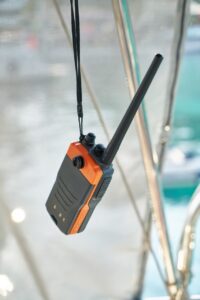Summary of the ADDIE Model
In the analysis stage, instructional designers need to examine instructional needs, context, and the target audience. This means that any planning will be directly related to the project at hand and tailored to the audience and learning context.
During the design phase, instructional designers build the outline and strucurre of a course in close consideration of the findings during the analysis stage. Learning objectives are set, content structure, strategies, types of assessment, Media, and even proptypes are established.
After the learning design phase, instructional designers will be able to create the content of each lesson/learning experience to complete the development phase. Media, such as videos, animations, audio, will be produced and all learning experiences integrated with the appropriate technology for delivery of the material. Designers will need to keep in mind compliance for accessibility and ethics. Trials of learning content may also take place and refinements may occur.
The implementation phase is where the learning takes place. The learning modules are delivered to the audience and feedback/support for the learners may be required. Adding to this, designers should monitor the engagement/progress and assessment and collect feedback for further refinement.
Both formative and summative evaluation are used in the ADDIE process, with formative information contributing to the refinement and adjustment of the learning experience throughout all stages, and summative evaluation providing an assessment of whether intended learning outcomes have been met. Data is of great use here, and data collected can be used to inform a feedback loop of revisions and enhancements that allow the course to be continually improved.
Strengths and Weakness of ADDIE
The ADDIE model provides a sound foundation for approaching the creation of a course/learning experience but falls short of being a comprehensive design model. The systematic approach to analysing learning needs and context and evaluating the efficacy ensure that appropriate learning objectives are known and met, or otherwise adjusted.
However, it does not take into account the challenges and opportunities that technology presents. New digital approaches mean that learners may have an additional learning gap in understanding how to interact with the learning platform or the digital approach may not suit some learners, particularly those who are older/not used to digital technologies. At the sae time, digital technology makes specific tailoring of learning goals and feedback more achievable, meaning that adjustments or evaluations can be made in real time during the prototyping/implementation phase.
More than this, the strict ADDIE model is rather time consuming, with whole phases focused on analysis and evaluation. Ultimately, it’s a fantastic model to follow if one can keep in mind the challenges and opportunities presented by digital technologies, and has the time to complete the meticulous analysis and evaluation that the model prescribes.
Target Audience for All Hands on Deck – Marine Long-Range Radio Course

The majority of learners will be boat owners/active water sports users between the ages of 18-50. Because of the current characteristics of this demographic, the majority of learners are male, however, there is rapidly growing female enrollments/interest, and the course content should ensure that the engagement of females is accounted for and encouraged.
The majority will have either some experience in operating a VHF radio, or have completed some practical marine training i.e. Power boating licence, Competent Crew, etc. With this in mind, most will be familiar with industry/activity specific terms. The course material, however, should provide additional information/clarification if required.
While most will be computer literate, it is not likely that they have any technical training or be familiar with many online learning platforms. Digital interactions should be kept to tap/click and type answers as much as possible.
Overall, the age spread of this group is relatively wide, but with a rather narrow field of experience and interests.
